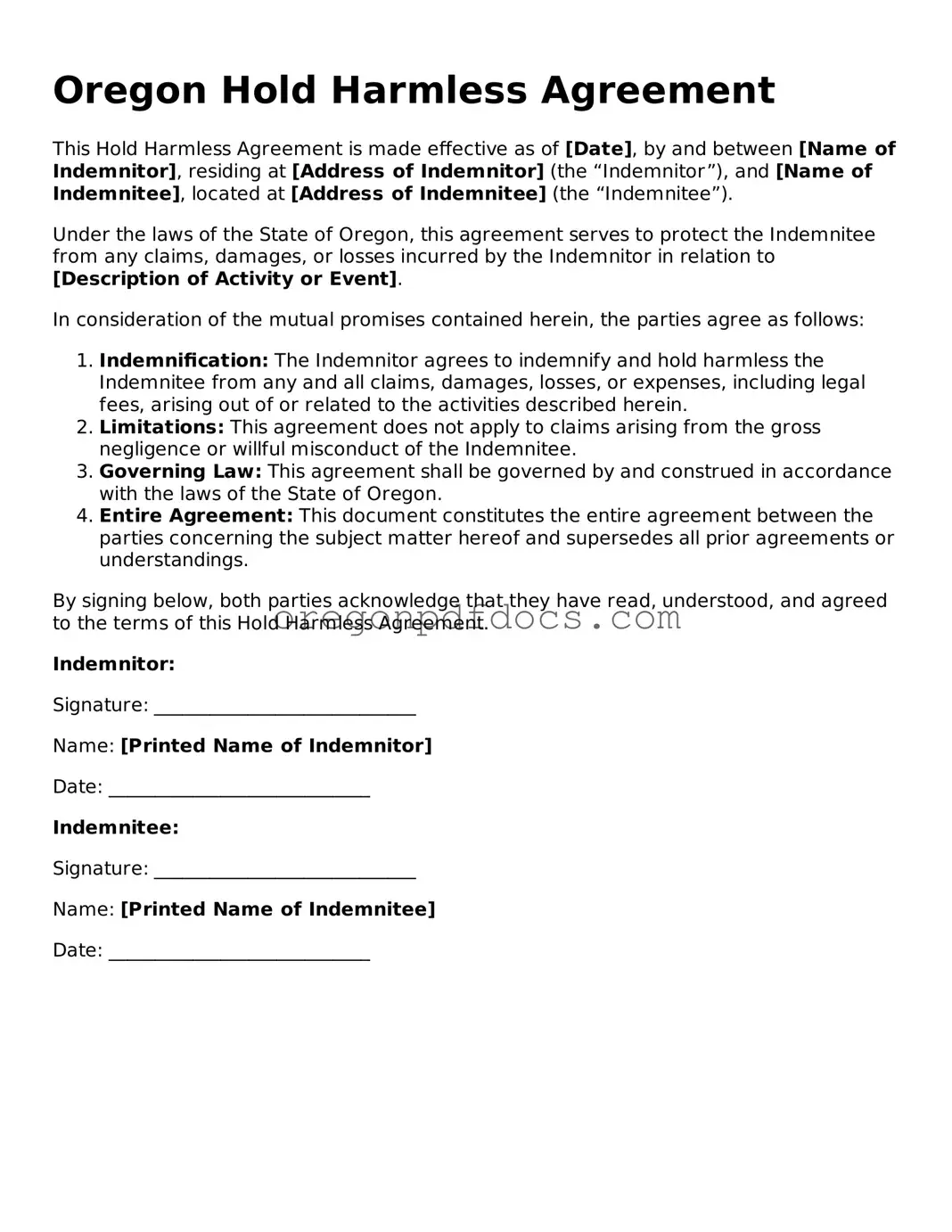Oregon Hold Harmless Agreement
This Hold Harmless Agreement is made effective as of [Date], by and between [Name of Indemnitor], residing at [Address of Indemnitor] (the “Indemnitor”), and [Name of Indemnitee], located at [Address of Indemnitee] (the “Indemnitee”).
Under the laws of the State of Oregon, this agreement serves to protect the Indemnitee from any claims, damages, or losses incurred by the Indemnitor in relation to [Description of Activity or Event].
In consideration of the mutual promises contained herein, the parties agree as follows:
- Indemnification: The Indemnitor agrees to indemnify and hold harmless the Indemnitee from any and all claims, damages, losses, or expenses, including legal fees, arising out of or related to the activities described herein.
- Limitations: This agreement does not apply to claims arising from the gross negligence or willful misconduct of the Indemnitee.
- Governing Law: This agreement shall be governed by and construed in accordance with the laws of the State of Oregon.
- Entire Agreement: This document constitutes the entire agreement between the parties concerning the subject matter hereof and supersedes all prior agreements or understandings.
By signing below, both parties acknowledge that they have read, understood, and agreed to the terms of this Hold Harmless Agreement.
Indemnitor:
Signature: ____________________________
Name: [Printed Name of Indemnitor]
Date: ____________________________
Indemnitee:
Signature: ____________________________
Name: [Printed Name of Indemnitee]
Date: ____________________________
